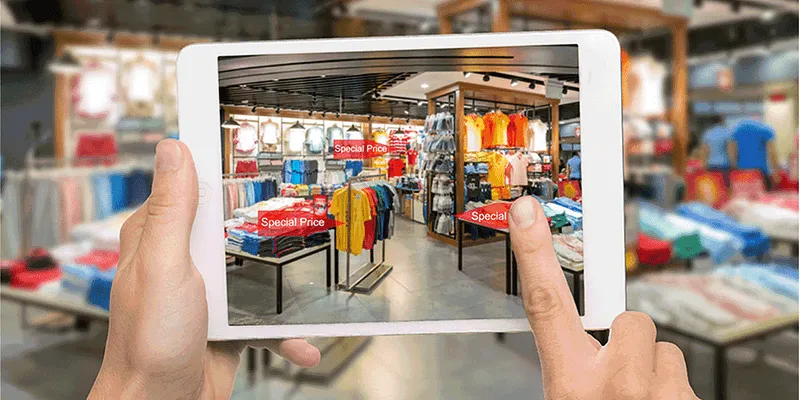Contactless kiranas post-COVID-19: big opportunity with bigger challenges
Startups believe kiranas will push people to go digital and several entrepreneurs believe the time is now to take this industry into a digital future.

Around 12 million kiranas are expected to go contactless in the near future
The race to make the kirana stores contactless will be won by technology, which is easy to use and connects the supply and demand side of the mom and pop store ecosystem.
The contactless kirana includes digital means to handle stock and the supply chain, receive digital orders from consumers, digital fulfilment, make digital payments, and sanction digital loans. If the projections are to be believed, 12 million kiranas are going to be the new data gold mine for startups.
In India, there are a host of companies trying to make small retailers go digital. These include behemoths like Reliance Jio and Facebook, along with unicorns like and . Also, a whole host of startups like , Mobisy, , , ShopX, PeelWorks, GoFrugal, , and are jumping on the chance to turn small stores and businesses contactless.
At the India Internet Day 2020 event organised by TiE Delhi, Citibank Consumer Business Manager Shinjini Kumar, Yellow Messenger Founder Raghu Ravinutala, Paytm’s SVP Renu Satta, Dineout Co-founder Ankit Mehrotra, and Indifi Co-founder Alok Mittal all said that they believe that this was a frontier that was waiting to be digitised, and now its time has come. Although the kiranas or small stores were initially slow to adopt digitisation, COVID-19 has changed everything.
Raghu Ravinutala of said,
“Over the last four months, commerce has begun on WhatsApp. There are 100 million internet users added over the last four months. People are using WhatsApp to place orders. We are seeing a tectonic shift and message-based ordering is the norm. Small stores can benefit from this development.”
The race to digitisation
The effort to make kiranas go digital centres around the customer data, which nobody seemed to have cracked. For years, kiranas were the ones that had this knowledge. Even the best startups could not digitise kiranas because traditionally, the mom and pop stores mostly focused on cash profits and weren’t easily wooed by technology businesses proposing that digital bookkeeping or stock-keeping could increase their revenues.
According to BCG, the Indian retail industry is currently $650 billion in size and will grow to $1 trillion in the next five years. Consumption is on the rise and India has a young population with an affinity towards spending a lot more on brands in retail and through ecommerce.
But before going digital, one must address the fair share of challenges and issues.
Citibank’s Shinjini Kumar said, “Everyone is thinking about sustained changes in the ecosystem. There are many platforms in India, and one of the things that has not yet evolved is who addresses the liability side of making kiranas go digital in payments and who addresses the issues faced when money transferred does not reach the calendar.”
On the payments side, QR codes based on UPI have become immensely popular where fintech platforms BharatPe, Phone Pe, Paytm, and Google Pay have dominated the proliferation of digital payments in mom and pop stores. Around five million kiranas have QR codes today.
Renu Satti of Paytm said,
“With demonetisation, people went digital. The COVID-19 pandemic created a second wave of digital acceptance and now kirana stores are digitising faster. Payments are being made simple and we have seen V-shaped recovery. The kirana store is an advocate of accepting digital payments. Kiranas want to offer safety and convenience and that’s why digitisation is now happening faster.”
On the stock and bookkeeping side of the kirana business, SaaS startups have not even crossed 30,000 stores and have plans to grow ten-fold in the coming decade. GoFrugal, Mobisy Technologies, Snapbizz, Shopmatic, Near.store, and JumboTail are some of the companies that dominate this business.

The effort to make kiranas go digital centres around the customer data.
Lending and survival of small businesses
Once the kiranas go digital, entrepreneurs will have a credit history and new-age financial institutions can underwrite their loans. This is where BharatPe expects its business to boom over the next ten years.
However, in the current situation, thousands of small businesses–which include restaurants–have to move to a contactless experience or the risk shutting down as barely any customers are dining out or visiting the markets.
Founder Alok Mittal said,
“The motivation for the small business to go contactless is very high. There are a lot of innovations happening in the small business sector. People can get loans from the comfort of their homes. There are a lot of stores integrating technology. The stores today want to know what else they can sell to the customer instead of just waiting for the manufacturers to send them the stock.”
Standing out
The new frontier, according to KPMG, is technology, which continues to change the rules of engagement to get consumers to notice a brand amid all the noise in the market.
With digitisation, people tend to order-in commodities, especially groceries. In such a scenario, the kiranas would have to think outside the transactional nature of their business in order to attract customers. Taking a case of grocery retailers, the panellists gave a few pieces of advice:
Hyper-personalise:
For many years, every customer with a smartphone has been a source of data. However, the new frontier in personalisation will analyse emotional data, eye movements and DNA, in addition to searches, purchases and views, to pinpoint exactly what customers need in real-time. Hyper-personalisation is the next step in our obsession with data. AI, image recognition and mood analysis provide deep and detailed understandings of consumer attitudes, reactions and patterns.
Refresh the experience:
Thinking outside cost and selection, many leading brands are immersing their customers into the shopping experience. Experiential retail, or ‘retailtainment’, can give a glimpse into the future. In a changing market, people cherish experiences and invest in material possessions. By creating a more immersive experience, retailers can attract people to their stores.
Appeal to emotions and values:
Consumers now choose to buy brands based on their social and environmental impact. They are shopping with their emotions and values instead of just their wallets. Customer-obsessed brands articulate and deliver a ‘vision’ that goes beyond simply selling groceries. The leading brands turn out to be those that demonstrate, across the CX, that they share their customers’ goals, dreams, and values.

Technology continues to change the rules of engagement
This is an opportunity that presents itself to the restaurant owners too.
Nearly 90 percent of restaurants under National Restaurant Association of India (NRAI)’s ambit downed shutters after India imposed a nationwide lockdown on March 25, 2020, allowing only essential services to operate.
Ankit Mehrotra of said, “We work with 50,000 restaurants in India. Never in the history of the world have restaurants shut down so fast. This was unprecedented and restaurants do not have any cash flows to survive on. Thirty percent of the restaurants on our platform have already shut down. Unlike other industries, restaurants are experience-driven and have to focus on being contactless”.
Ankit added,
“Menus need to go digital. But becoming contactless starts from home from where you book a table in the restaurant. Pre-ordering is also very important because of social distancing. A 100-seater restaurant has now become 50-seater, and they need people to come in and go out quickly. Every table has a QR code and the menu opens up. Restaurants are creating a smaller menu and the wastage is less. Eating out is coming back and will pick up over the next few months.”
While the future for certain is going to be completely contactless, the real question is when will that happen, and how can startups bring 12 million kiranas and 35 million SMBs into the digital fold.
Edited by Javed Gaihlot and Kanishk Singh










